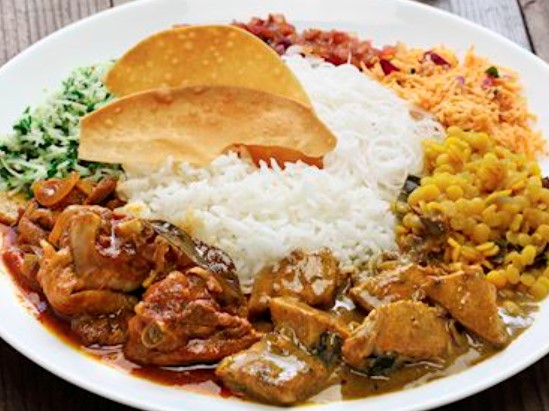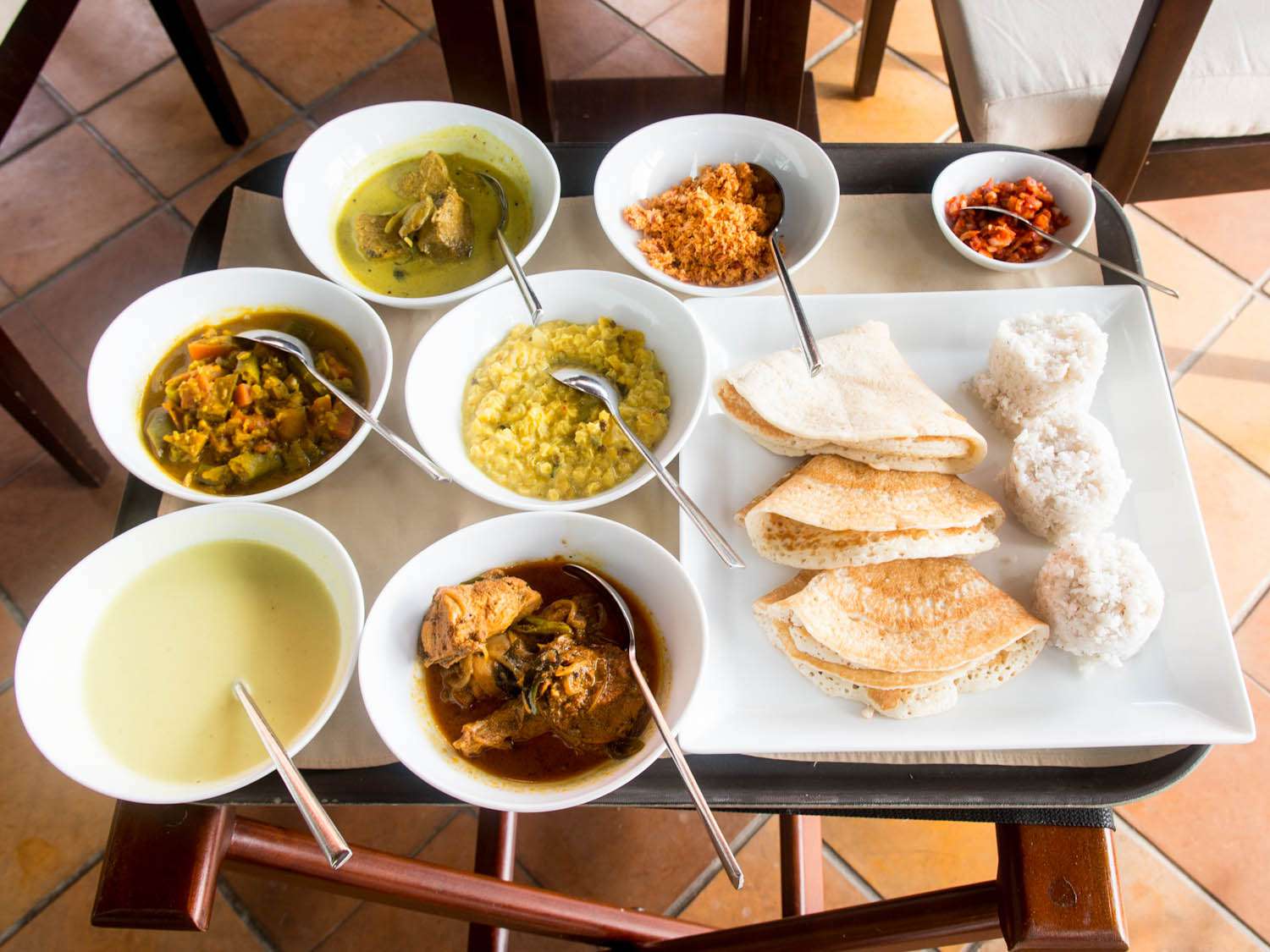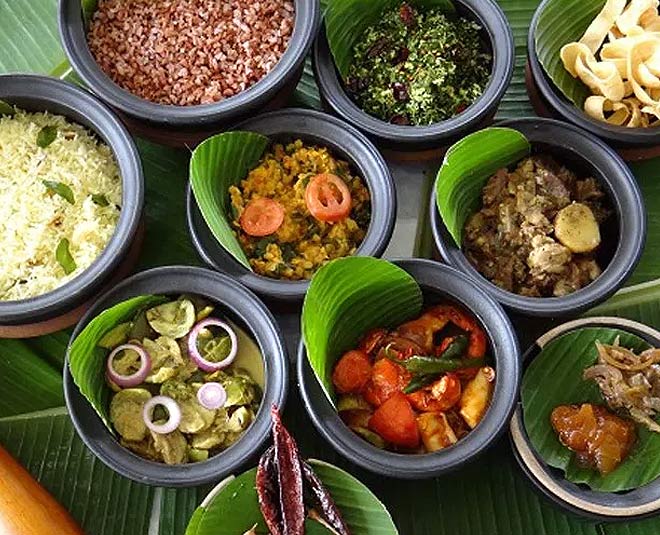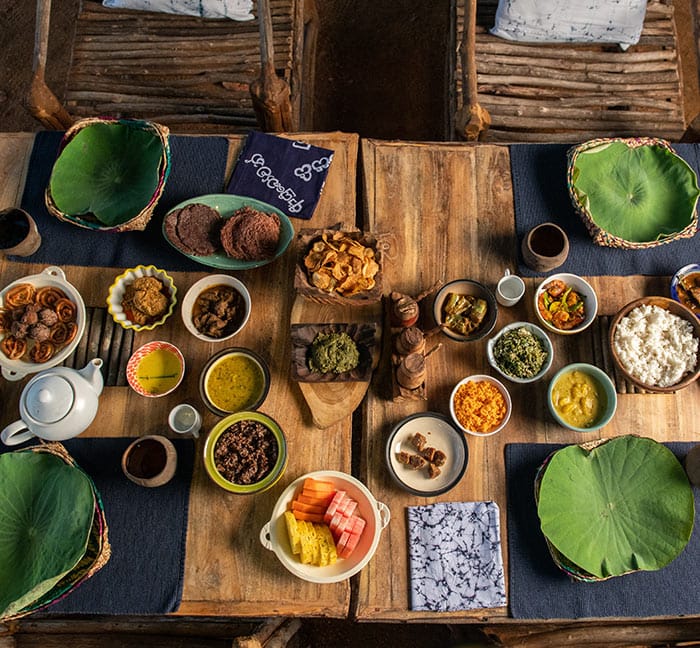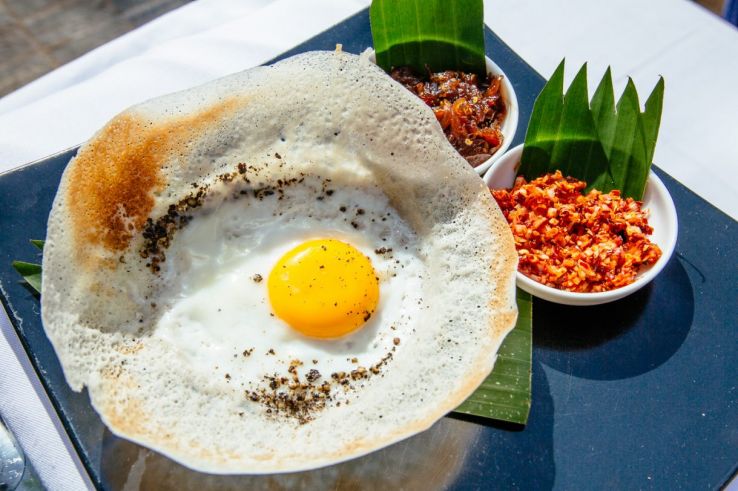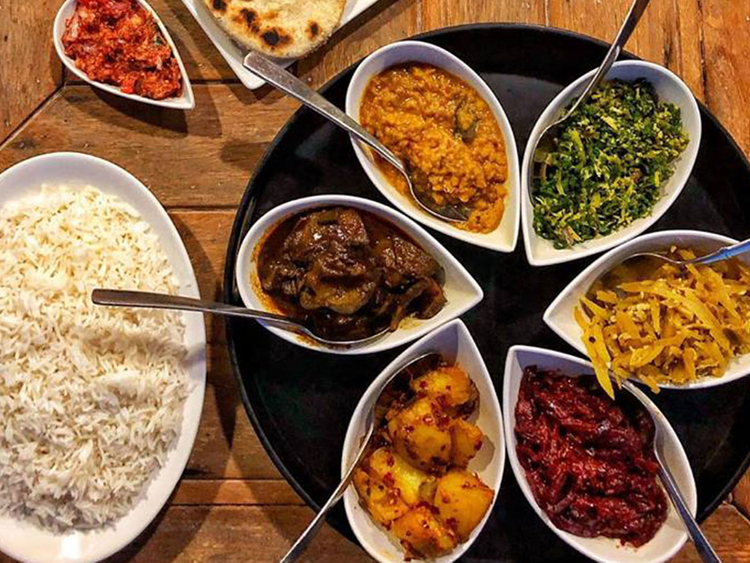Sri Lankan cuisine is often stereotyped as South Indian, but is actually a mixture of South Indian and Indonesian cuisines with a touch of Dutch flavor. Here is a list of 15 of the best Sri Lankan restaurants serving delicious and varied food.
Helgas Folly
Helgas Folly is one of the few self-contained Sri Lankan restaurants located in the Kandy hills. With a sumptuous atmosphere, courteous staff and plentiful food to suit all types of tastes, Helgas folly is one of the finest restaurants in Sri Lanka.
Must Try: Coconut Soup, Chicken Abigail, Fish Pie
Location: 70, Rajapihilla Mawata, Kandy
Cuisine: Sri Lankan
Panorama
If you are looking for Sri Lankan rooftop restaurants then Raswasala is the best choice. An outdoor terrace surrounded by lush green mountains and accompanied by mouth-watering Sri Lankan dishes provides the best rooftop dining experience.
Must Try: Buffet
Location: Amaya Hills, Herrassagala, Kandy
Time: from 6:00 to 9:30, from 12:30 to 14:30, from 19:30 to 22:00.
Cuisine: multi-cuisine
Raswasala
If you are looking for Sri Lankan rooftop restaurants then Raswasala is the best choice. An outdoor terrace surrounded by lush green mountains and accompanied by mouth-watering Sri Lankan dishes provides the best rooftop dining experience.
Must Try: Buffet
Location: Amaya Hills, Herrassagala, Kandy
Time: from 6:00 to 9:30, from 12:30 to 14:30, from 19:30 to 22:00.
Cuisine: multi-cuisine
Theva Restaurant
Theva Restaurant is one of the most luxurious Sri Lankan restaurants offering elegant indoor and outdoor seating and magnificent views of the Hantana Hills. The restaurant offers a wide variety of culinary delights in the Bread section as well as several award-winning dishes on the menu.
Must Try: Baked Fish, Stuffed Chicken, Passion Fruit Cheesecake
Location: Theva Residency Road, Kandy
Timing: 12 pm. until 3 pm and from 7 pm to 10 pm
Cuisine: multi-cuisine
Amangalla
Amangalla is part of Sri Lanka’s living heritage, overlooking the Galle Fort with colonial ambiance and well-kept surroundings. Amangalla is undoubtedly one of the best Sri Lankan restaurants in Galle, offering a unique variety of innovative cocktails and cuisines that change every day.

Must Try: Beetroot Soup, Eggplant Ravioli, Tiger Prawns
Location: 10 Church Street, Galle
Cuisine: multi-cuisine
Fortaleza
Located right next to the Galle Fort, Fortaleza offers a charming rural ambience with a modern touch. This is one of the best Sri Lankan restaurants in terms of food, as the chefs work hard to provide a homey touch to every dish and the fast service along with the friendly staff plays the cherry on the cake.

Must try: fajitas, fish and chips,
Location: No. 9 Church Cross Street | Fort Galle, Galle
Dates: from 9 am to 10 pm
Cuisine: European, Asian
Maison de Raux Caf
Maison de Raux Caf- With stunning views of the Indian Ocean and traditional British architecture, serves great food all day. This is one of the best rooftop restaurants in Sri Lanka, offering not only high quality food but also some enchanting views of the city accompanied by a soothing ocean breeze.

Must Try: Fish curry, coconut rice, waffles
Location: Pedlars Street, Galle
Cuisine: multi-cuisine




